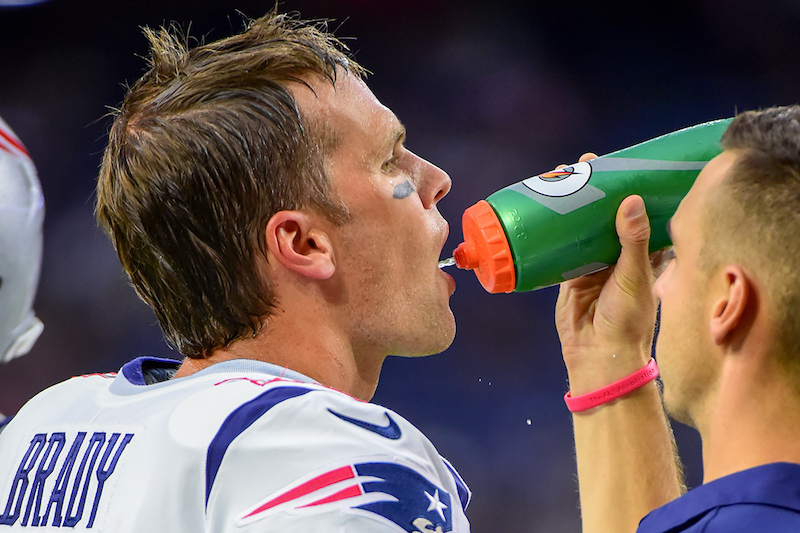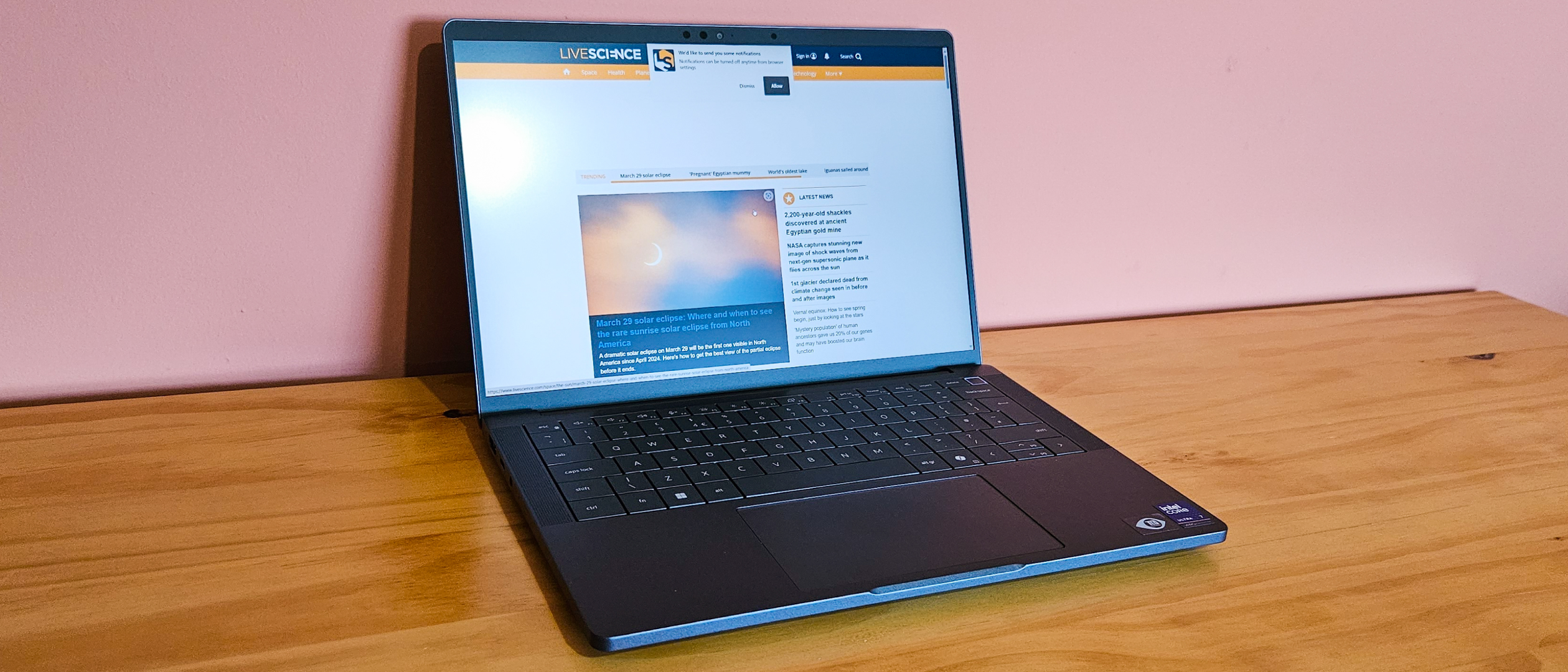Ignore Tom Brady: 37 Glasses of Water a Day Is Too Many

The next time you go to the supermarket, pause in front of the dairy section. Pick up a 1-gallon (3.8 liters) container of milk in each hand, and take a good, long look. That's about how much water New England Patriots quarterback Tom Brady drinks every day he exercises.
According to his recent book "The TB12 Method" (Simon and Schuster, 2017), Brady drinks 150 ounces (4.4 liters) of water "on a given day," and "close to twice that" — amounting to about 2.3 gallons (8.7 liters), or 37 glasses — when he exercises, the New York Daily News reported.
This is all part of Brady's daily nutrition regimen for what he calls "sustained peak performance." And for readers who would like to hydrate like he does, he recommends the following: "Drink at least one-half of your body weight in ounces of water every day … ideally, you'll drink more than that, and with added electrolytes, too." [How Much Water Do You Really Need To Drink?]
There's no doubt that the human body — which is 60 percent water by weight, on average — needs water to exist. And the services water provides the body range from regulating internal temperature and transporting nutrients to lubricating joints and even acting as a shock absorber for vital organs.
And so, Brady's advice may be sound, in principle: Because highly active people lose more water to sweat throughout the day than sedentary people do, athletes need to drink more than couch potatoes to replenish their fluids. But is 37 glasses really necessary? And is there any merit to Brady's one-half-body-weight-in-ounces rule? We snapped the ball to science for the answers.
The truth about 1/2BW
As it turns out, Brady is not the first to propose this benchmark — it's actually a popular hydration myth about as common as the "8 x 8" rule (which advises people to drink eight 8-ounce glasses of water a day), according to a 2015 study in the Journal of Water Resource and Protection.
But neither rule seems to have any scientific backing.
Get the world’s most fascinating discoveries delivered straight to your inbox.
"Just as the 8 x 8 rule has unknown precise origins, the 1/2BW rule also has unknown origins," the study authors wrote. "Let alone being scientifically validated (we were unable to locate any documentation)."
When the authors compared the actual fluid intakes of a group of hospital patients to the amount they'd need to drink according to the 1/2BW rule, the researchers found that the goals set for heavier patients were especially unreasonable. "One patient in our sample weighed 345 lbs. [156 kilograms]," the authors wrote. "According to the 1/2BW rule, he would need 21.6 glasses of water a day — intuitively this seems excessive."
One flaw inherent to rules like these is that they overlook the water content people consume every day through food. The National Academies of Sciences estimates that the average North American consumes about 20 percent of his or her daily water through meals — a factor that should be accounted for when considering hydration needs. Brady's rules also overlook nonwater beverages such as coffee, tea, juice and milk, which the Mayo Clinic recognizes as valid sources of daily water. Contrary to a popular claim, studies have shown that coffee is not dehydrating (although consuming too much caffeine can throw your body off in other ways).
But simply forcing yourself to drink copious amounts of water to reach an arbitrary goal can be more than excessive — it can be dangerous, too.
Too much of a wet thing
People who consume more fluids than they sweat out are prone to a condition called hyponatremia, a body water imbalance that occurs when excess fluid flushes too much sodium out of a person's blood. Oversaturated cells swell up throughout the body, resulting in headache, vomiting, seizure and, in the worst cases, stroke or death.
According to a 2015 studyin the Clinical Journal of Sport Medicine authored by 17 international sports medicine experts, "the single most important risk factor [for hyponatremia] is sustained, excessive fluid intake in volumes greater than loss through sweat, respiratory and renal water excretion."
When hyponatremia occurs, it's usually within 24 hours of exercise, and while it is common in distance runners, it can affect anyone, the authors wrote. Between 2008 and 2014, three American high-school football players died suddenly of hyponatremia after practice. According to the Clinical Journal of Sport Medicine study, the boys had been encouraged to drink copious amounts of water and sports drinks in order to treat their muscle cramps. (The journal went on to dissuade excess water consumption as "a panacea" for sports injuries.)
This is just one reason why drinking to meet arbitrary water-intake goals is ill-advised. So what's the healthiest water program you can subscribe to?
"The safest individualized hydration strategy before, during and immediately following exercise is to drink palatable fluids when thirsty," the study authors wrote.
As Live Science previously reported, there is no universal formula for daily water intake. Every person has different hydration needs based on their age, weight, level of physical activity, overall health and even the climate they live in. Drinking when you are thirsty — and just a little extra when you are exercising — is the only surefire rule for healthy hydration.
Originally published on Live Science.

Brandon is the space/physics editor at Live Science. His writing has appeared in The Washington Post, Reader's Digest, CBS.com, the Richard Dawkins Foundation website and other outlets. He holds a bachelor's degree in creative writing from the University of Arizona, with minors in journalism and media arts. He enjoys writing most about space, geoscience and the mysteries of the universe.

